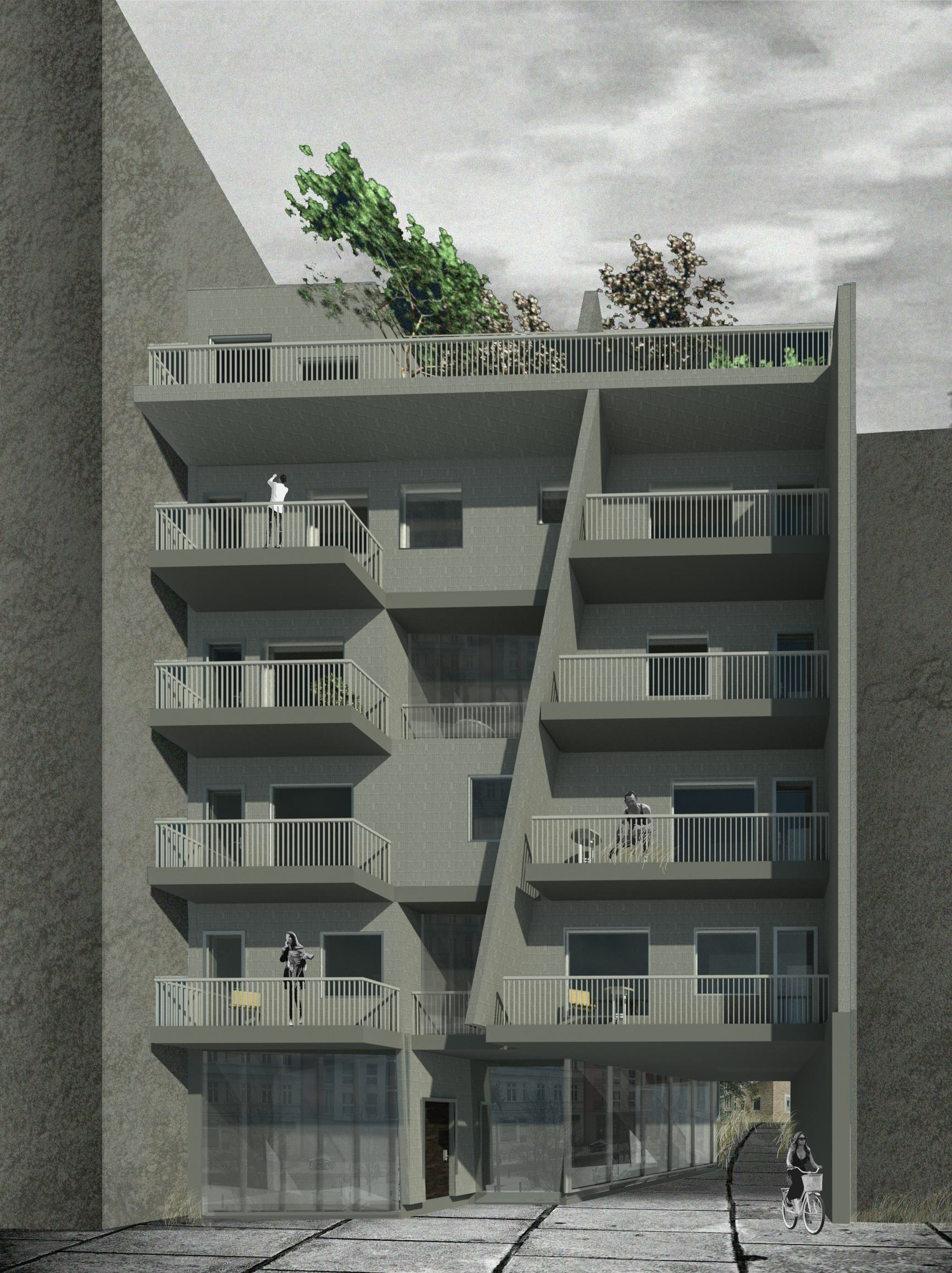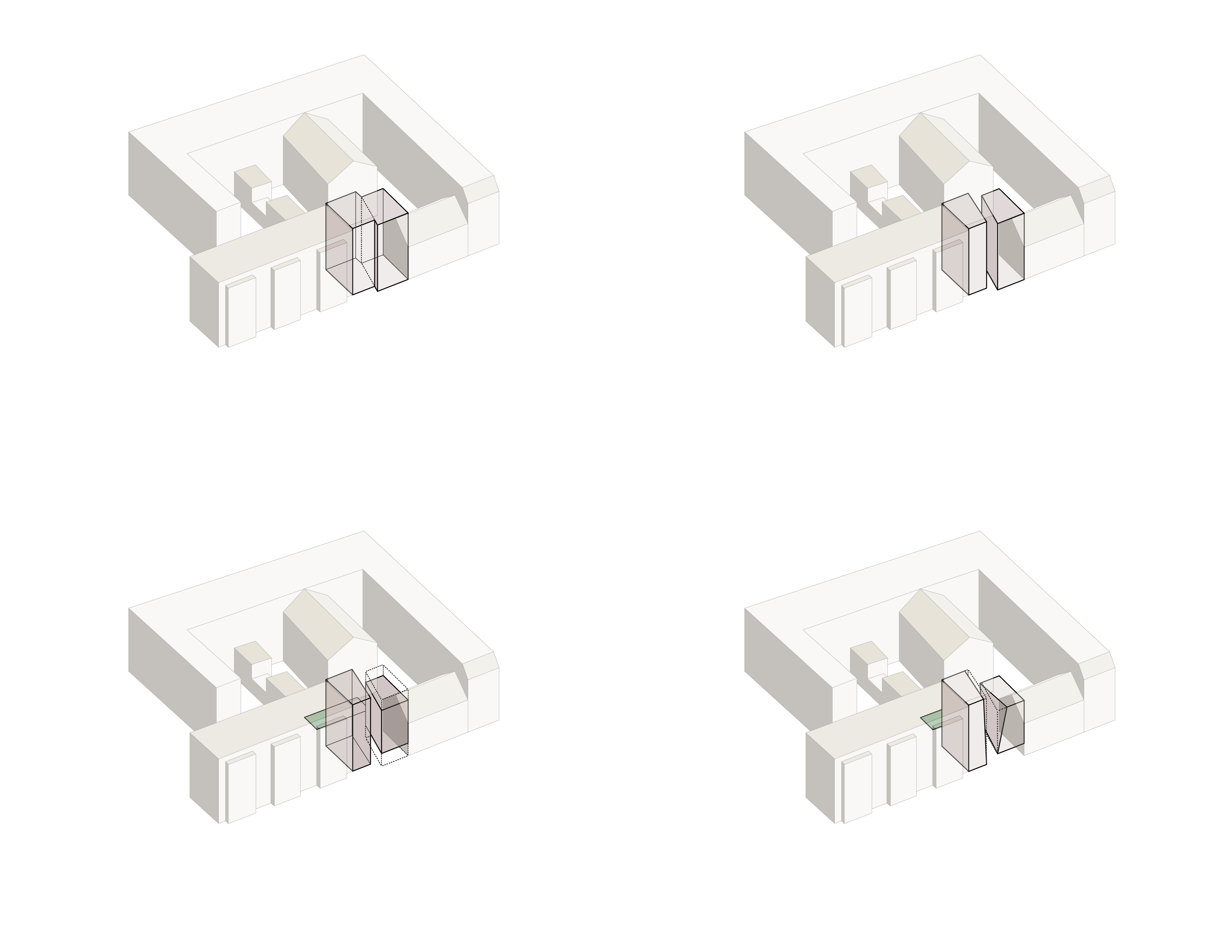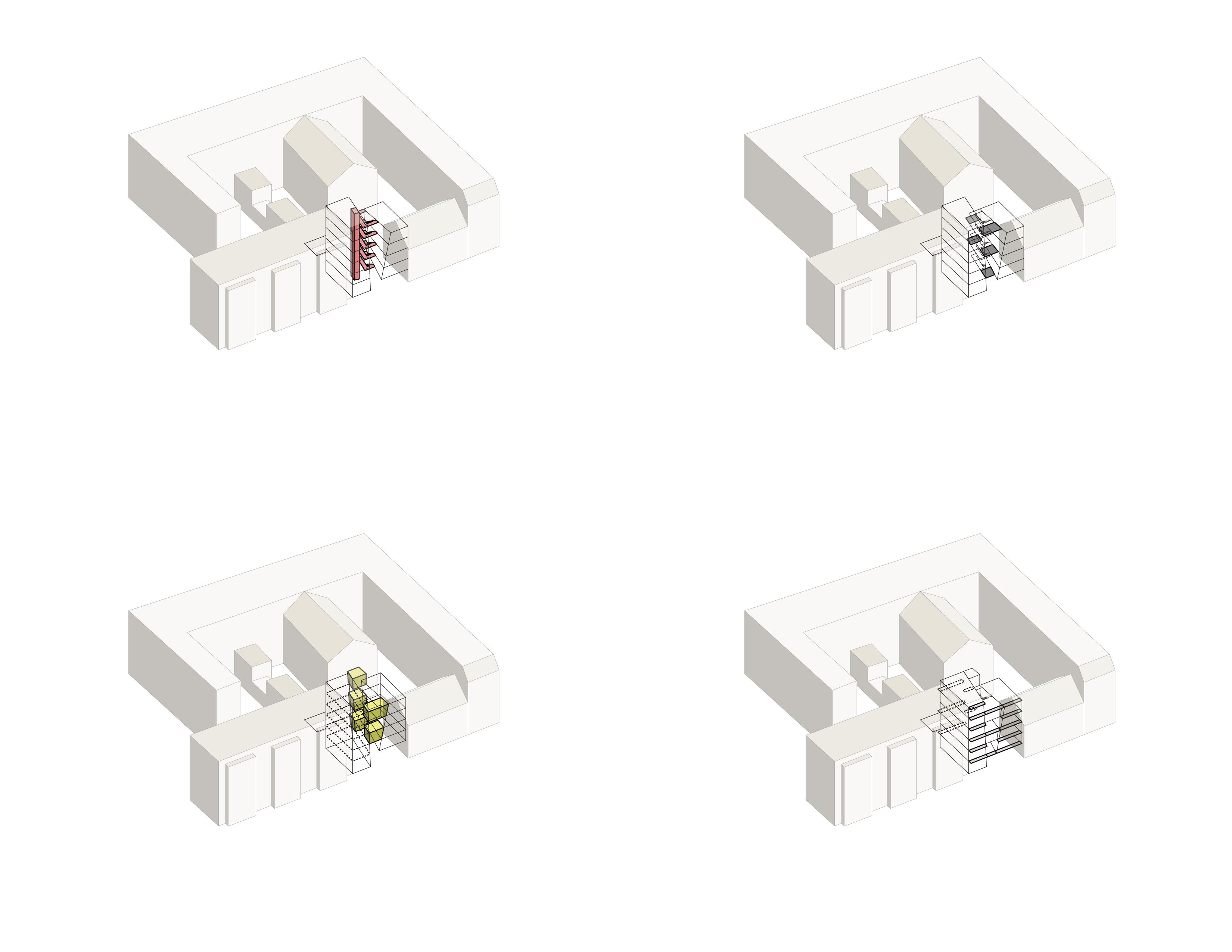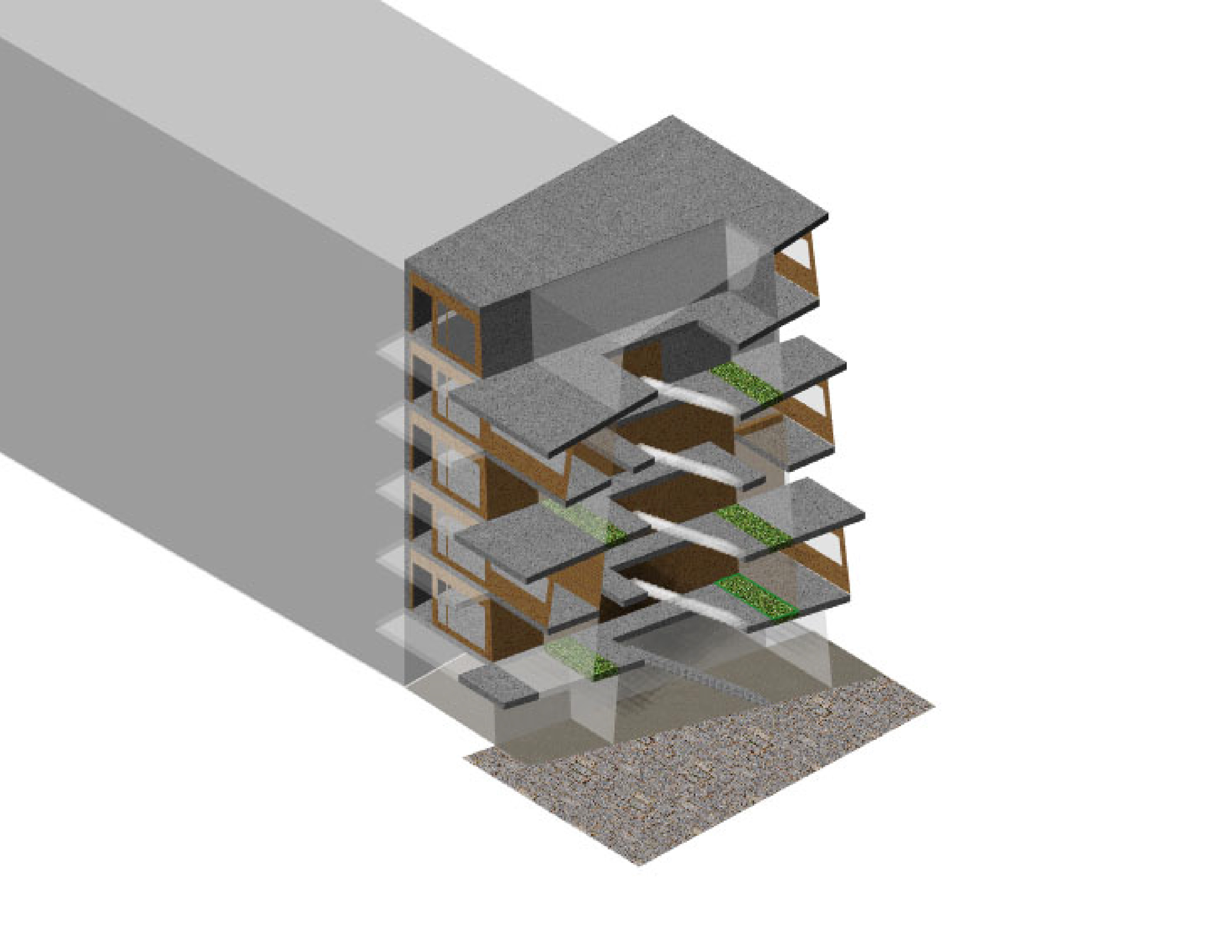︎in collaboration with Bojan Nsevic & Diyan-Yu
In the
mass-production of modern apartment buildings following the destruction of WWII,
lots in Berlin were filled with modular forms that generated leftover pockets of
space between what was there and what is new.
These sites slated for infill are each unique, but spatially
complex. They must reconcile forms of
the past, rooflines, and histories with contextual
sensitivity.
Infill
Unfold both links and defines, extruding the profiles of its existing
neighbors, a vertical glass extrusion highlighting the moment of encounter.
Technical
spatial research analyzes the site's challenging solar conditions given
surrounding structures within the traditional courtyard typology, in order to
generate a productive and efficient core form that maximizes passive lighting
exposure and penetration, as well as heating and cooling conditions throughout
the building.
The
core thus performs many functions: a glass skylight allows the core to act as a
lightwell, nurturing vertical vegetation walls that in turn act as active and
biophilic element for privacy screening and air purification;
an
operable glass roof facilitates stack ventilation, linked through the core to
clerestory windows in each unit, drawing fresh air through the entire
building.
This
central core unfolds parametrically through the building, becoming not only a
space of movement, but also one of gathering through shared, alternating,
outward facing terraced expansions of the core form. The space of transition also becomes a place
of destination.
This
studio was a search for and test of sustainable strategies for
multi-generational micro-housing in the urban infill context, to satisfy the
present and pressing in Berlin for re-densification that also caters to a
rising transitional population.
Densification often necessitates small-scale living, rendering communal
space sacrificial. This building is a
blatant attempt at compromise; we argue for the prioritization of communal
space as an extension, a complement of the individualized space.
The
hierarchy of spaces in this building establish differentiated space in the
public and private realm; auxiliary residential units benefit from the constant
interaction of the core, communal rooftop above and courtyard behind, and
within, small spaces of solitude, open floor plans, and private exterior
balconies.




















